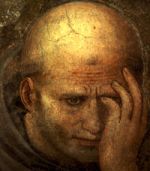Lifting of Excommunication: Mixed Feelings
By Dr. Jeff Mirus ( bio - articles - email ) | Jan 26, 2009
In a decree dated January 21st, Pope Benedict XVI lifted the excommunication imposed upon the four bishops of the Society of St. Pius X whom the late Archbishop Marcel Lefebvre illicitly ordained to continue his Traditionalist movement. The bishops are the current head of the Society, Bishop Bernard Fellay, and Bishops Bernard Tissier de Mallerais, Richard Williamson, and Alfonso de Galarreta.
The decree was signed on the eve of the 50th anniversary of the announcement of the Second Vatican Council, a date the Vatican Press Secretary has said should indicate that the Council should be seen as a source of unity, not division. Interestingly, the lifting of the excommunication, originally imposed in 1988, was opposed by Rome’s chief rabbi because Bishop Richard Williamson is said to be a Holocaust denier. Some would suggest, not without evidence, that this sort of constricted vision is all too common among extreme Traditionalist personality types, but it is hardly an excommunication-related issue. (For a very interesting analysis of this problem, see Phil Lawler’s Bishop Williamson, making trouble again.)
My own feelings are admittedly mixed. Benedict clearly hopes that by removing one impediment to unity, the Society of St. Pius X will be moved to resolve its remaining differences with the Church and come into full unity. Considering how difficult it has been over the past forty years for traditional Catholics to find the support and consolation they deserve under the authority of bishops and priests too often seriously infected by the surrounding secular culture, this resolution is devoutly to be desired. All Catholics should pray for this result.
At the same time, we cannot forget that those who go beyond a legitimate attachment to tradition to make an “ism” out of it actually reject certain teachings of the Magisterium of the Church itself, most notably the Second Vatican Council’s teaching on religious liberty. It is possible that this rejection arises in part from misunderstanding, and to this extent Benedict’s emphasis on reading the Council through a hermeneutic of continuity rather than one of rupture may help the leaders of the SSPX to accept what the teachings in question actually mean. Benedict’s decree, even while lifting the excommunications, expressed the pointed hope that this would be “followed by the solicitous fulfillment of full communion of the Church with the Society of St. Pius X, thereby witnessing to authentic fidelity and a true recognition of the magisterium and the authority of the Pope, with the proof of visible unity.”
Clearly, then, even while setting aside the excommunications, Benedict does not regard the bishops in question to be in full communion, because they reject certain Magisterial teachings. If they did not reject these teachings, they would have been reconciled long ago, as were those of their number who have formed the papally-approved Fraternity of St. Peter. Therefore, insofar as the lifting of the excommunication serves to legitimize doctrinal dissent, with no ultimate resolution, it will serve to make worse, on the right, a brand of cafeteria Catholicism which is already far too evident on the left.
One might argue, somewhat pragmatically, that at least both sides would then be treated the same way for a change; and one has considerable sympathy for such pragmatism. But surely the SSPX ought to be judged according to one of the principles that it has gotten right—namely that heretical teachings and schismatic actions ought not to be allowed to continue without disciplinary action. In U.S. Constitutional parlance, even if the excommunications were not “cruel” they were certainly “unusual”, but at least they were an unusual exercise of that ecclesiastical authority which is so obviously necessary for the strengthening of the Catholic Church. If the lifting of the excommunications fails to bring about the desired result, seven devils may well enter in where only one held sway before.
It seems clear enough that the prior policy of excommunication did not bring about the desired result—at least not totally, for it did result in some former Traditionalists returning home. Benedict is now pursuing a policy he hopes will be more effective, a policy which also signifies his intense sympathy for the way in which deeply committed Catholics have too often been treated over the past generation or so. I share that sympathy (though no amount of suffering at the hands of misguided superiors could induce me to break unity with the Church herself). In the last analysis, then, this is a policy issue, and the Pope is to be applauded both for recognizing what hasn’t worked and for taking a risk on something new.
But, for better or worse, the ultimate test of any policy is that policy’s results.
Note: I am happy to add that, as of April of 2017, Pope Francis is taking rapid steps to regularize the canonical status of the SSPX. During the Jubilee of Mercy last year, the Pope gave canonical faculties to all SSPX priests for hearing confessions, and on April 4, 2017 the Pope gave SSPX priests faculties to witness marriages in the name of the Church, and directed all bishops to make provision for the same. Finally, Pope Francis’ plan (not yet complete) is to reincorporate the SSPX into the normal life of the Church by establishing the Society as a personal prelature.
All comments are moderated. To lighten our editing burden, only current donors are allowed to Sound Off. If you are a current donor, log in to see the comment form; otherwise please support our work, and Sound Off!








